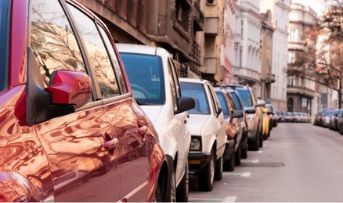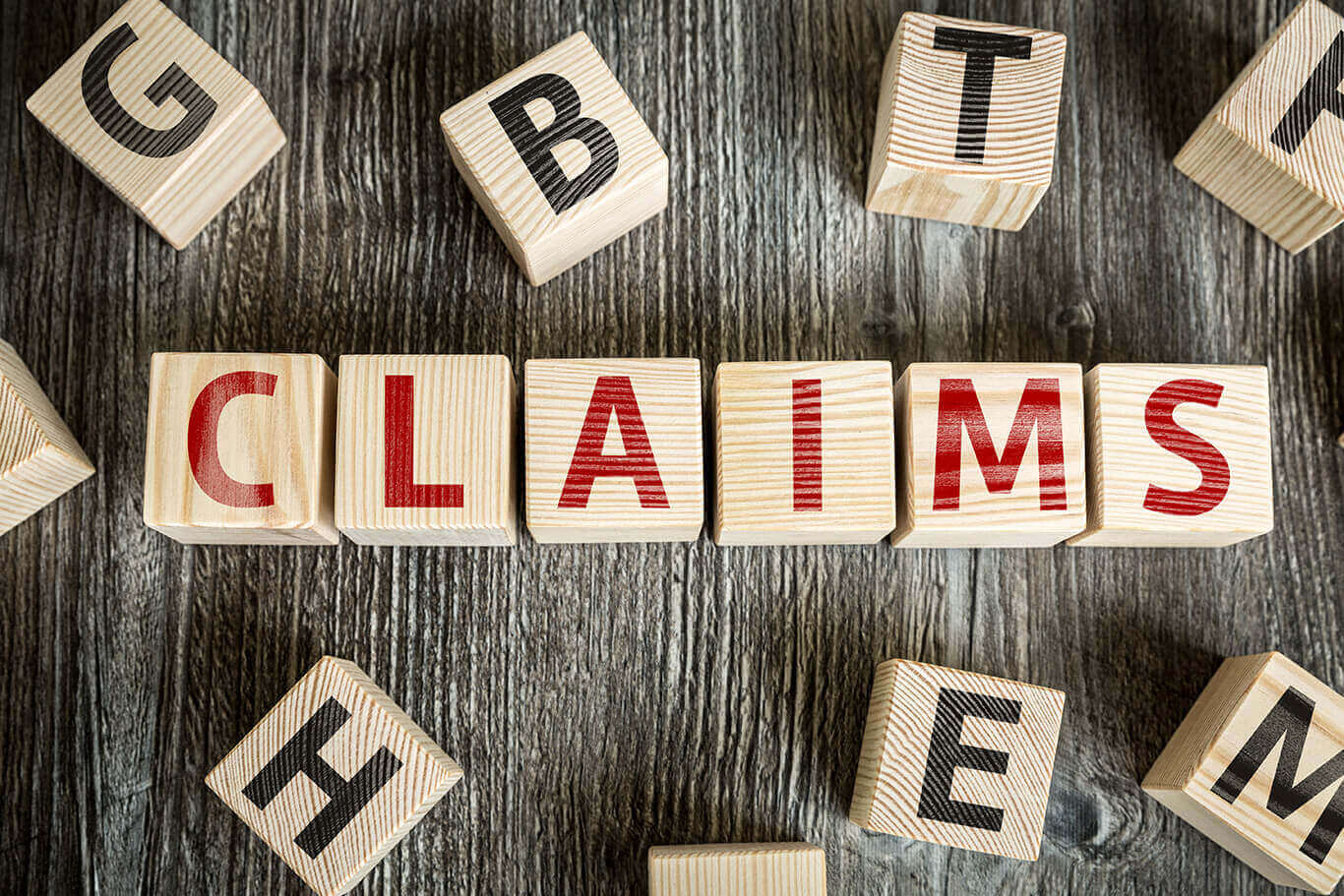General Insurance Blogs, Articles & Updates by - Magma HDI
Have us call you
- RENEW YOUR POLICY
- BUY NEW POLICY

Here’s a guide to parallel parking that has guaranteed results
People often complain about parking spaces, especially in our country. They usually park illegally and in spots that make it difficult for pedestrians to navigate their ways and get to their destinations conveniently. Many people need to develop their parking skills, to avoid the problems of congested roads, traffic jams, etc. Parking your cars also avoids the risk of accidents, keeps your vehicles safe against any damage caused by collisions, and helps maintain proper order on the road.
Parallel parking is a skill that people find challenging to master. Are you somebody who has constant complaints about your inability to parallel park your two-wheeler or four-wheeler in parking spaces or congested parking lots? Well, do not worry. This blog is curated just for you. It discusses the tips to parallel park for you to read, quickly understand and practise parallel parking safely without damaging your car or hurting yourself.
1. Do not just go for a spot:
Always explore the spots that are empty before just going for the first one that you see. Giving it a thought for a minute will help you determine which location will be convenient for you and has enough space for you to parallel park your vehicle without any risk of collisions or damage. Determining if your car can fit in a particular area is crucial. Also, ensure that you keep a distance of at least two to three feet from the other vehicles.
2. Next step – reverse:
Your second step is to reverse correctly. Notice the other vehicle and reverse your car till the middle portion of your vehicle is parallel positioned concerning the next car’s bumper (rear). Keeping a distance of two to three feet is handy when you reverse. There is absolutely no risk of collision with the cars next to you on either side.
3. Platform behind your vehicle:
You must keep reversing your vehicle until you park perfectly parallel to the vehicles on the side and the divider, usually on the driver’s seat side. Ensure that you are aware of any platforms behind the cars in the parking lot to avoid crashing into them and damaging your vehicle while reversing it.
4. Aligning is important:
The last and final step is to check that your car is placed at an equal distance from the vehicles on either side of it and has enough space to open the door and get out comfortably. If not, straighten it or try parking it properly again. Aligning your car avoids the risk of any bumps and damages while you or others who have parked next to you try to move the vehicles out of their parking spaces.
While you parallel park, some tips to keep in mind include using your indicators to signal other cars that you are trying to park and avoid mishaps that might occur due to misreading directions. Slowly backing your vehicle is essential to prevent bumps into surfaces you might have missed out. Determining your parking position and being in control of your steering wheel are two other vital tips to ensure that you do not end up rushing or losing control of your vehicle.
These were a few ways to help you parallel park your vehicle in crowded places. Practise these steps, prevent the risk of damage to your vehicle, and learn to park it safely without creating chaos for fellow vehicles. And while we protect our vehicles against any damage, it is also crucial that you understand the significance of purchasing the best motor insurance India to safeguard your car against mishaps and avoid any monetary stress in case of a damage. Buy the best motor insurance India that compensates for the complete repair and maintenance of your car.
Click HERE to learn more about the benefits of purchasing motor insurance India.
Disclaimer: The information provided above is for illustrative purposes only. To get more details, please refer to policy wordings and prospectus before purchasing a policy.

WHAT IS RT-PCR TEST for detecting corona virus infection? By Dr Sunilkumar Bura
RT-PCR Means Real-Time Polymerase chain reaction. RT-PCR one of the type PCR which the RNA template is first converted into a complementary DNA (cDNA) using reverse transcriptase. The cDNA is then used as a template for exponential amplification using PCR. Enabled sample amplification and eliminated the need for abundant starting material required when using northern blot analysis.
RT-PCR has been used to measure viral load with HIV and may also be used with other RNA viruses such as measles and mumps.
Advantages of real-time PCR test-
1. Amplification and detection occur in a single tube, eliminate post PCR manipulation.
2. An increased dynamic range of detection.
3. Ability to precisely measure the amount of amplicon at each cycle which allows highly accurate quantification of the amount of starting material in samples.
4. Ability to monitor PCR reaction in real-time.
Real-time PCR steps-There are mainly 3 steps involved in real-time PCR Reaction. Reactions generally run for 40 cycles -
1. Denaturation-High temperature incubation is used to melt double standard DNA into single standard DNA and loosen secondary structure in single standard DNA. The highest temperature use for Denaturation is 95 degrees.
2. Annealing-Complementary sequences have an opportunity to hybridize.
3. Extension-At 70-72ºc the activity of the DNA polymerase is optimal, and primer extension occurs at the rates of up to 100 bases per second.
TWO STEP qRT-PCR-Reverse transcriptase PCR (qRT-PCR) starts with the reverse transcription of either RNA or poly (A)+RNA into CDNA.
ONE STEP QRT-PCR-First-strand cDNA synthesis reaction and real-time PCR reaction in the same tube, simplifying reaction setup and reducing the possibility of contamination.
WHAT IS RT-PCR FOR nCOVID-19
The Health Ministry has announced that the real-time reserve transcription-polymerase chain reaction or RT-PCR is the gold standard frontline test for COVID-19.
One is more accurate called RT-PCR which is extracting RNA from the nasal or mouth swab. Because of Genome sequencing technology, we have the sequence of SARS-COV-2 and RNA of the swab is checked whether virus and RNA share the same sequence. Because of proper research and Genome sequence projects going around the world, RT-PCR tests are considered more accurate and reliable.
DISADVANTAGES OF RT-PCR-
RT-PCR Technology is a relatively expensive method. It requires RNA extracting machines, a laboratory and trained technicians. Minimum of 30 samples is needed to make it economically viable.

What you should do in case of accidents?
You’re driving safe. You’ve got your eyes on the road, and your seat belt on. But even if you do everything right, accidents well, they simply happen. While we know you’re doing your best to avoid accidents, here’s a list of essential tips to keep in handy in case you’re in an emergency:
- If you or any of your passengers are injured, medical help is priority. Get first aid immediately.
- Observe the site of the accident and note down all the details you can – from the location, to important number plates and names.
- If there are eye-witnesses to the accident, make sure you note down their contact details, so you can follow up with them later.
- Take pictures of the place where the accident happened. In times like these, every detail helps!
- If the police have registered a case, remember to note down the case number.
- Keep track of all the expenses you’ve had to undergo due to the accident. That means, don’t throw a single bill or receipt away!
- Lastly, make sure you file your insurance claim as soon as you can! Because the sooner your Insurance Company knows about the incident, the sooner they can help you out.
In case of an unfortunate incident on the road, our no. 1 tip for you is the simplest: don’t panic! Stay calm, and keep a level head.
No matter where you are, always keep the accident no. on speed dial
Here’s to many safe, stress-free road-trips!

Eating during COVID-19: How nutrition can protect people's health during COVID-19
Started from the province of Wuhan in China, COVID-19 has spread all around the world, leaving behind the massacres. First reported on 30th January 2020, India has recorded a total of 1.44 million active cases and more than 32 thousand people have lost their lives as reported till 27th July 2020. Yet, till the current date, no verified vaccines have been launched in the market leaving behind a massive matter of concern for the common masses. In incurring medical care, what comes up to our mind first, does health insurance in India cover the COVID-19 or not?
What expenses does the health insurance cover?
Current Coronavirus health insurance in India covers hospitalization expenses including in-patient hospitalization, pre-hospitalization and post-hospitalization expenses. But it's always better to get our immunity system to act as the main barrier to trust, and for that, we need a stone-hard immunity.
What do you need for better immunity?
To get better immunity, we must focus on our nutritional well being and good food habits. To boost your immune system, you need the essential macro and micronutrients like proteins, good fats, carbohydrates, inorganic elements, and essential vitamins, apart from looking at the health insurance in India.
Some foods that you must include in your diet
1. Milk: One of the most common and cheap nutrition-rich liquid food is milk. A cup of dairy milk contains almost 8 grams of protein, 12 grams of carbohydrates, and 2.4 grams of fats along with Vitamin A, Vitamin D, and Vitamin B12. It is also a good source of Calcium(Ca) and Potassium(K). Due to the high complete protein content, it helps in lean muscle building and keeps bones healthy too. Having one cup of milk a day could help us keep us on track with the daily macros and micro required to boost up our immunity.
2. Egg: A whole egg contains approximately 13 grams of protein, 1.1 gram of carbohydrates, 11g of good fats along with Vitamin A, VItamin B2, B5, B6, B12, Vitamin D, Vitamin E, and Vitamin K. The high-quality proteins and Essential Amino Acids in egg make it a complete source of protein. It is also a great source of Calcium, Zinc, and Iron. It raises HDL, which reduces the risks of heart disease.
3. Chicken: With a protein content of 27g, good fats of 14 grams, chicken is one of the best low-fat protein sources. It maintains muscle mass, strengthens bones, and reduces appetite. Though fried chickens might not be too good for our health, preferably grilled or boiled chicken, should be consumed for better outcomes.
4. Fruits: A variety of foods must be consumed regularly. Different fruits have different useful nutrient facts.
I. Banana: It has a high source of good carbohydrates. It also contains the right amount of Iron, Potassium, and Vitamin C. It is also a good source of fibres that keep our intestine healthy.
II. Lemons: The most famous citrus fruit, Lemons are highly rich in Vitamin C, Potassium, and fibres. Vitamin C helps in reducing heart disease risk, and the citric acid in lemons reduces kidney stones.
III. Grapes: Grapes packed with nutrients, especially Vitamin C and K are an excellent antioxidant that may prevent chronic diseases. It may reduce cholesterol and also might decrease blood sugar levels.
A balanced and well nutritious diet can help you increase your immunity to combat COVID-19 effectively. With healthy food, a bit of proper exercise will enhance your metabolism. Different health insurance in India promotes self-awareness so that the policyholders stay away from medical help.

Why Claiming takes so much time!
It’s time we shorten the time to Claim.
You know what’s the worst part about making a claim? THE WAITING! That uncertain period of time between you submitting your case, and your insurance company responding with a simple ‘Yes’ or ‘No’. We have all been through the ordeal, and we have all resigned to the bitter fact that there’s nothing you can do to change the situation.
Well, we decided we could do something about it! And we did!
Here’s how we manage to deliver seamless claims.
No waiting
You don’t have to wait for a third-party inspection, which may take days. Just do a quick self-survey using your smartphone camera by clicking pictures of the damage and send it to us. That’s it, your inspection is done in minutes!
No hard-copies
We don’t ask you for hard copies. We live true to our name and make everything ‘digital’. Which means, for any documentation or proof, just send us a soft-copy over email.
Our Customer Care works 24x7, making sure your claims are approved faster

Work from Home - The new normal By Vikram Singh
Unprecedented times ask for unprecedented measures !! Many such measures and changes were enforced on our “way of life” due to COVID 19 crisis.
One such major change also for us Magmaites was WFH or "Work From Home". WFH became the new normal for us over the course of time, however this transmission has not been easy to many of us.
Once it was declared critical to put restrictions on physical movements to contain the spread of deadly virus - technology came to our rescue. This has been to ensure continuity of 'Work' even if it happens from the “safe” corners of our 'Homes'.
The vivid transition in our work lives -
1. To start with, it has evidently erased the physical boundaries of Home and Office
2. Those grapevine discussions over a 'Chai’ break' sound like a thing of past
3. Zoom has virtually intruded in to the Meeting spaces across all offices. One age-old proverb calling 'Man': a social animal, sounds meaningful and valuable now.
4. The very definition of “office time” has erased and one cannot see official and personal time differently as the office settings sometime tries to evade the personal or leisure settings. Perhaps, a reason, why Psychologists believe that separation from office-space would certainly have a toll on mental wellbeing of most of the people.
5. However, there are reasons to smile too. For, people are able to save a lot of travel-time - eventually adding to their overall productivity and happiness. They are able to give more time and attention to their loved ones as well. Almost everyone is trying their hands at long lost talents and hobbies - that is again adding to their mental wellbeing and creativity.
6. We were able to connect with our family members more and it has opened various possibilities in our relationships. This has definitely added immense value in our personal lives
At the end of the day, what we can look forward to is to have more disciplined and balanced approach to deal with these challenges and opportunities posed by our newly adopted WFH practices, and we can hope to get the better of this deadly virus soon enough, so as not to miss out on our beloved office tea breaks any longer !!

Considering open floor interiors? Here are its pros & cons
Open floor plans are increasingly trending in modern interior design. This layout combines two or more traditional spaces, such as a kitchen, dining room, and living room, into one large, open area. While there are many benefits to an open floor plan, there are also some drawbacks to consider.
Are you considering open-floor interiors for your home? We will discuss its pros & cons in the blog, so you can decide whether this layout suits your home. So, without further delay, let's get started with the pros.
Pros:
1. Increases natural light
Opening up walls and combining spaces allows natural light to flow freely throughout the entire space, brightening the room and improving the look and feel of the home.
2. Enhances social interaction
Open floor plans allow for easy social interaction between family members and guests. Parents can watch children while cooking or doing other activities, and hosts can mingle with the guests while still taking care of other activities.
3. Makes smaller spaces appear larger
An open floor plan can create an impression of a larger space, even if the square footage is small. The area can feel more spacious by removing walls and creating a seamless flow.
4. Easy to entertain
Hosting a dinner party or social gathering with an open floor plan becomes effortless as everyone can move freely without feeling cramped or disconnected.
5. Adds value to your property
Open floor plans are currently prevalent in the real estate market, and having one in your home can increase its value, which can be beneficial when you sell your property.
Now let's have a look at the cons.
Cons:
1. Noise pollution
With an open floor plan, noise from one area can easily travel to another, which can be troublesome when hosting guests or trying to relax.
2. Lack of privacy
Privacy can become a concern with an open floor plan, mainly when multiple people occupy the same space. This can disturb others when they need privacy to take a phone call or want to work quietly.
3. More challenging to decorate
Open floor plans can be more challenging to decorate as no natural dividers between spaces exist. Creating distinct zones in the same area may require more creativity and effort.
4. Messes are more visible
With an open floor plan, messes in one area can be seen from other parts of the room. This can be challenging and time-consuming as you need to clean it up regularly to have a tidy home.
5. Higher rates of house insurance India
Insurance companies may charge higher rates for homes with open floor plans as they may be riskier due to the potential for more significant losses in a disaster.
6. Requires more cooling and heating
While an open floor plan can reduce heating and cooling costs in some instances, it can also require more heating and cooling in others. This is particularly true for larger spaces, which may require additional heating and cooling to maintain a comfortable temperature.
Open floor plans offer many benefits, including increased natural light, enhanced social interaction, and the feeling of a larger space. However, as they also come with their share of challenges, consider your lifestyle, family size, and how you plan to use the space when finalizing an open floor plan. With careful consideration, proper process, and planning, you can make a thoroughly informed decision about the house insurance India you should buy that will serve your needs optimally and provide you with a functional and beautiful living space for years to come.
Click HERE to learn more about the benefits of purchasing house insurance India.
Disclaimer: The information provided above is for illustrative purposes only. To get more details, please refer to policy wordings and prospectus before purchasing a policy.

Know when and how you can get your car’s engine tune-up done
An engine is the core of our car, and you would want it to be in perfect shape every time you turn on its ignition. An engine tune-up consists of checking, diagnosing, and fixing minor problems that come up in the engine with regular usage of the car. This process includes checking the spark plugs, wires, distributor caps, air filters, oil filters, fuel filters and wiring, etc.
Regular engine tune-up helps extend your car's life and increase its efficiency. Let's understand how you can get your car's engine tune-up done.
When do you need a tune-up?
The odometer is the first and foremost thing that can tell us that your car's engine needs a tune-up. If your car has completed the minimum number of kilometres specified by the vehicle manufacturer, after which an engine tune-up becomes due.
Other signs that can indicate that an engine tune-up is required are lack of power and pick-up, decreased fuel mileage, erratic running, problem in starting, malfunctioning lights flashing on the dashboard, etc.
How can you get your car's engine tune-up done?
You should always go to an authorised service centre recommended by your car manufacturer for an engine tune-up. Any outside service provider or mechanic should never do your car's engine tune-up, as it may null and void the engine warranty.
The basic steps for an engine tune-up are as follows:
1. Replacing plugs and wires:
The first step in an engine tune-up is thoroughly checking the ignition system and its functioning. The spark plugs, coils, plugs, wires, and any other electrical part that helps in the car ignition are to be inspected.
For example, ignition wires can break down or wear out with usage. It can result in misfiring, performance loss, rough idling, and, eventually, making your car cylinder dead. Similarly, we need to check whether the ignition coils are in good shape and working properly. It can also lead to engine misfiring, poor acceleration, low fuel mileage, etc.
2. Filter change:
There are various types of car filters, such as oil filters, fuel filters, air filters, and cabin filters. Timely cleaning of filters is essential for improving engine performance and efficiency. If the filters are dirty, the engine will toil hard to get the required air, fuel, or oil, thus making it choked and perform poorly.
3. Belts and hoses:
All hoses need to be checked as they transfer vital fluids across the engine. Any disruption in the hoses will result in engine malfunction. Similarly, we need to check various belts that help the engine to run efficiently as they wear down, turn brittle, crack and eventually break with time and usage.
4. Right liquids:
For a car engine to perform perfectly, it needs a variety of fluids in perfect proportion, such as engine oil, coolant, brake fluids, power steering fluid, transmission fluid, etc. There is a regular change interval for each of the fluids. The change also depends on your car usage.
If you use your car regularly and run around a lot, you will need to change these fluids frequently and vice-versa. If you do not change these fluids timely, they can lead to engine malfunction and even breakdown.
Regular and timely engine tune-up is very important for keeping your car fit. It ensures that your car runs efficiently and its heart- the engine is in perfect shape. It also helps to increase the life of your car.
To address the car's safety, you must purchase a private car insurance India policy. It protects your car from any damage or loss that it may suffer from fire, theft, accidents, natural disasters such as earthquakes and floods, etc. It also provides coverage from third-party liabilities. Hence, you must choose the right insurance service provider to provide adequate coverage and protection in times of need.
Click HERE to buy private car insurance India.
Disclaimer: The information provided above is for illustrative purposes only. To get more details, please refer to policy wordings and prospectus before purchasing a policy.


